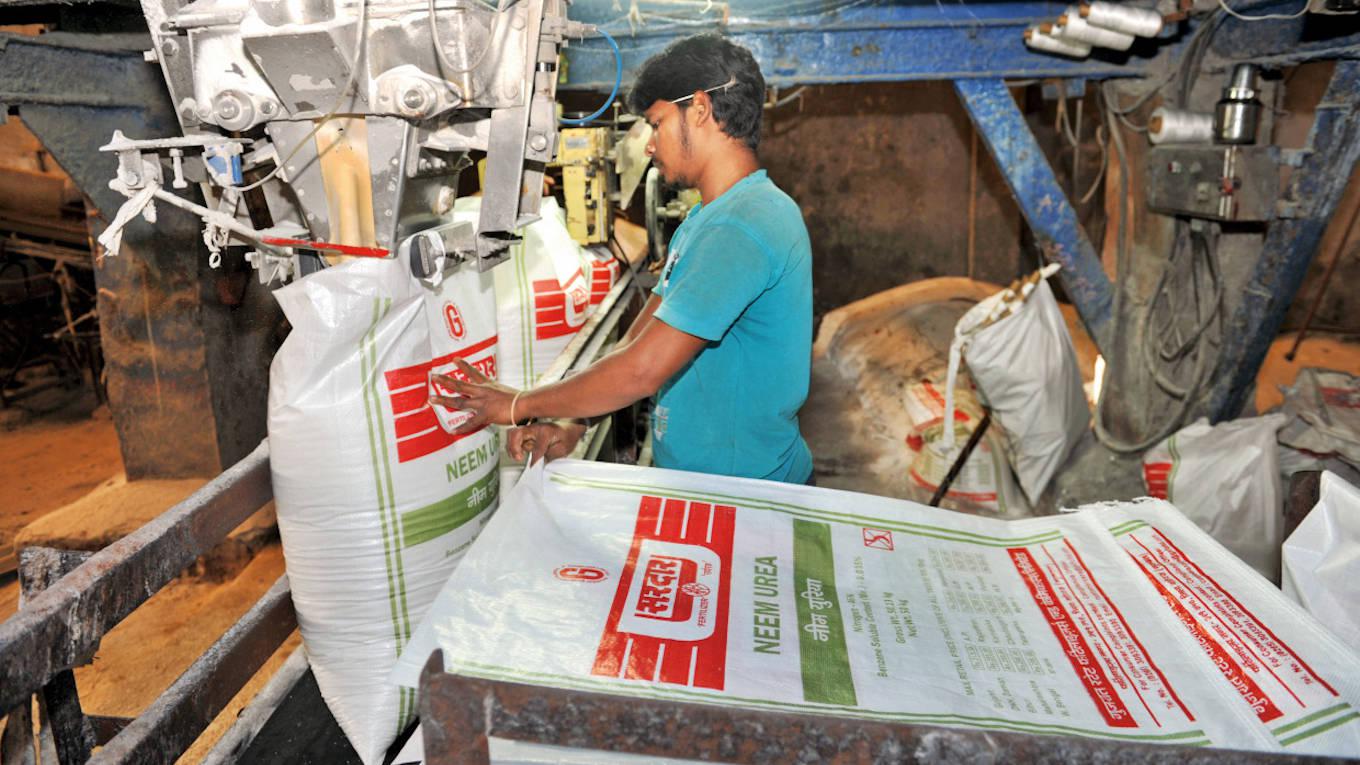The Modi government has announced 137 per cent subsidy on di-ammonium phosphate (DAP) fertiliser, a key input in agricultural operations in the state. This works out to an increase in subsidy from Rs511.55 to Rs1,211.55 per 50-kg bag. The move, estimated to cost an additional Rs14,775 crore to the exchequer during the coming kharif season alone, was aimed at winning over the agitating farmers of Punjab and Haryana. DAP is the second most commonly used fertiliser in India, with its sales of 11.9 million tonnes (mt) in 2020-21 next only to the 350.42 mt of urea. Farmers normally apply this fertiliser just before or at the time of sowing, as it is high in phosphorus (P) that stimulates root establishment and development – without which plants cannot grow to their normal size or will take too long to mature. DAP contains 46 per cent P and 18 per cent nitrogen (N). While there are also other phosphatic fertilisers – single super phosphate (SSP), for instance, has 16 per cent P and 11 per cent sulphur (S) – DAP is the farmer’s preferred choice. The Bharatiya Janata Party (BJP) leaders were quick to hail it as a historic decision aimed at improving farmers’ lives. But reports from Punjab and Haryana suggest that a section of farmers isn’t buying the BJP’s line – they say that farming is not just confined to subsidies on DAP; the major concern is still the high input cost of farming. Still, the government is hoping that, at a time when farmers are getting ready for sowing operations with the arrival of the southwest monsoon rains, the news of enhanced subsidy for DAP would be welcomed by farmers. Politically, a revival of farmer protests, in the midst of the second wave of Covid-19, is the last thing the government would want. Forced to act The government’s hand appears to have been forced by the global commodities bull run. DAP subsidy was Rs10,231 per tonne or Rs511.50 on a bag of 50 kg. Most companies, until recently, were selling this fertiliser to farmers at about Rs24,000 per tonne or Rs1,200/bag. They could do it when international prices – of both the final product and the imported raw materials/ingredients such as rock phosphate, sulphur, phosphoric acid and ammonia – were at reasonable levels. Landed prices of DAP in India were below $400 per tonne or Rs29,000 till October. Adding 5 per cent customs duty and another Rs3,500 towards port handling, bagging, warehousing, interest, trade margins and other costs took it to about Rs34,000 per tonne. After claiming the subsidy of Rs10,231 per tonne, companies could sell at the said MRP of Rs24,000/tonne. But global prices have surged over the past 6-7 months, tracking the general bull-run in commodities. Since October, the average import (cost and freight, Indian ports) prices of DAP have risen from $395 to $570/tonne, while shooting up from $275 to $365 for urea, $230 to $280 for MOP, $280 to $550 for ammonia and $85 to $210 for sulphur. That made it unviable for companies to sell at the old rates. The bull-run left fertilizer companies with little choice but to go ahead with the MRP hikes. As the political implications of that became clear, Prime Minister Narendra Modi chaired a meeting, following which a ‘historic decision’ was taken to more than double the subsidy on DAP from the existing Rs10,231 to Rs24,231 per tonne.
-

Will the subsidy help BJP harvest votes?

































